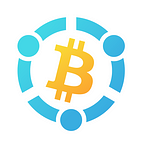Things You Need to Know about ViaBTC: Learn How Bitcoin Mining Works
Although Bitcoin is almost a household name now, some people new to the digital currency may still wonder what is Bitcoin or how crypto mining works. So let’s break it down and have a close look!
First of all, let’s figure out what is mining. Traditional mining is a practice where miners exploit mineral resources using equipment, which can be either simple labor tools like a hoe or large modern mining machines. By contrast, mining in the field of digital currency is a process of calculating the next hash value with mining rigs. In the crypto world, miners (people who process data) are tasked to collect raw transaction information that has not been recorded, check whether there is any problem with the obtained information, and then package the verified information into a data block. Once in a while (about 10 minutes or so), everyone is required to process data, but only one person can successfully record an account. After data are packaged into a block, miners need to solve a series of cryptographic problems to win the sole right of accounting. Specifically, the process of solving a cryptographic problem is to look for a hash value through a great deal of calculation. Since the hash calculation in the process remains irreversible, it is very difficult to find a hash value that meets the requirements.
After a miner finds the hash value that satisfies the requirements, he or she can broadcast the processing results to the entire network. Other miners will receive and check whether this data block complies with the rules. If most of them feel that there is no problem, the data block will be connected to the blockchain, accepted by everyone, and win the miner who has packaged it the corresponding Bitcoin rewards.
Mining rewards change over time. In the Bitcoin system, mining difficulty across the entire network can be dynamically adjusted through its own algorithm, to ensure that a single block is created every 10 minutes in the Bitcoin network. Specifically, in the first four years (the first Bitcoin was mined on January 3, 2009), miners were rewarded with 50 Bitcoins per block, which has kept halving for every 210,000 block transactions. So let’s do the calculation. As the Bitcoin system is configured, one block is generated every 10 minutes, and there are 6 blocks in 1 hour. The number of blocks created in a year is calculated as 365 (days) * 24 (hours) * 6 (6 blocks per hour)=52,560. So how many years will it take to get 210,000 blocks? The answer is 4 years. This explains the reason for “halving every four years”, an often-heard expression.
There is a hard cap of about 21 million Bitcoins that can be mined, with the final coins being minted in around 2140. After that, miners will no longer receive block rewards. They will instead be rewarded with transaction fees. It is worth mentioning that, as of now, Bitcoin’s block reward has been cut to 6.25 BTC.
Based on the above, the contradiction between the dwindling block rewards and the growing consensus about Bitcoin pushes up mining costs. For the long term, the Bitcoin price, underpinned by the consensus, will keep surging to new record highs.
As the ranks of Bitcoin miners swell, the hashrate of the entire Bitcoin network continues to soar. So it is almost impossible to dig block rewards with a single mining rig or a small amount of hashrate as miners did before. As a response, mining pools have arisen. Getting rid of geographic limitations, they bring together miners scattered around the world along with their hashrate. Mining pools engage in information packaging, while mining farms to which they are connected contend for accounting rights. The aggregation of many miners endows mining pools a large hashrate share, which in turn boosts their probability of mining Bitcoin rewards. The Bitcoin rewards generated by mining pools are proportionately distributed according to each miner’s hashrate contribution. Compared with mining single-handed, joining a mining pool can bring miners more stable income. ViaBTC Pool officially launched the Bitcoin mining pool in June 2016, followed by the LTC, Dashcoin, and Ethereum mining pools. As an industry-leading veteran mining pool, ViaBTC provides professional, efficient, safe, and stable digital currency mining services for nearly one million users in 130+ countries/regions. With outstanding technology and considerate service, it has accumulated a good reputation and abundant operation experience in the nearly 5 years since its establishment. In particular, ViaBTC has ranked first among the global mining pools by hashrate, as it managed to shield itself from wild swings, at a time when top mining pools broadly suffered a hashrate plunge due to China’s massive mining crackdown.
Well, the above is a brief introduction to how Bitcoin mining works. If you still feel confused or have some other doubts about mining, please visit our official website (URL: www.viabtc.com). Click “Help Center” at the bottom right corner of the homepage, to learn more about mining!
